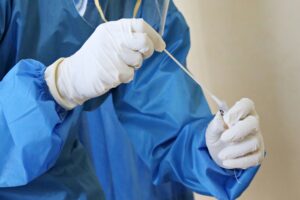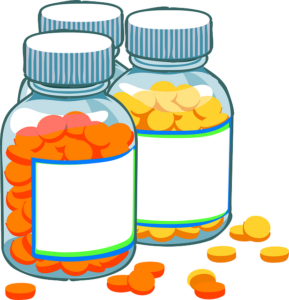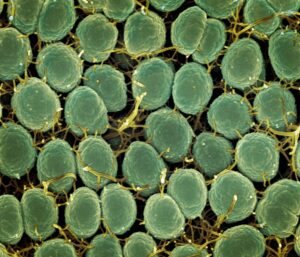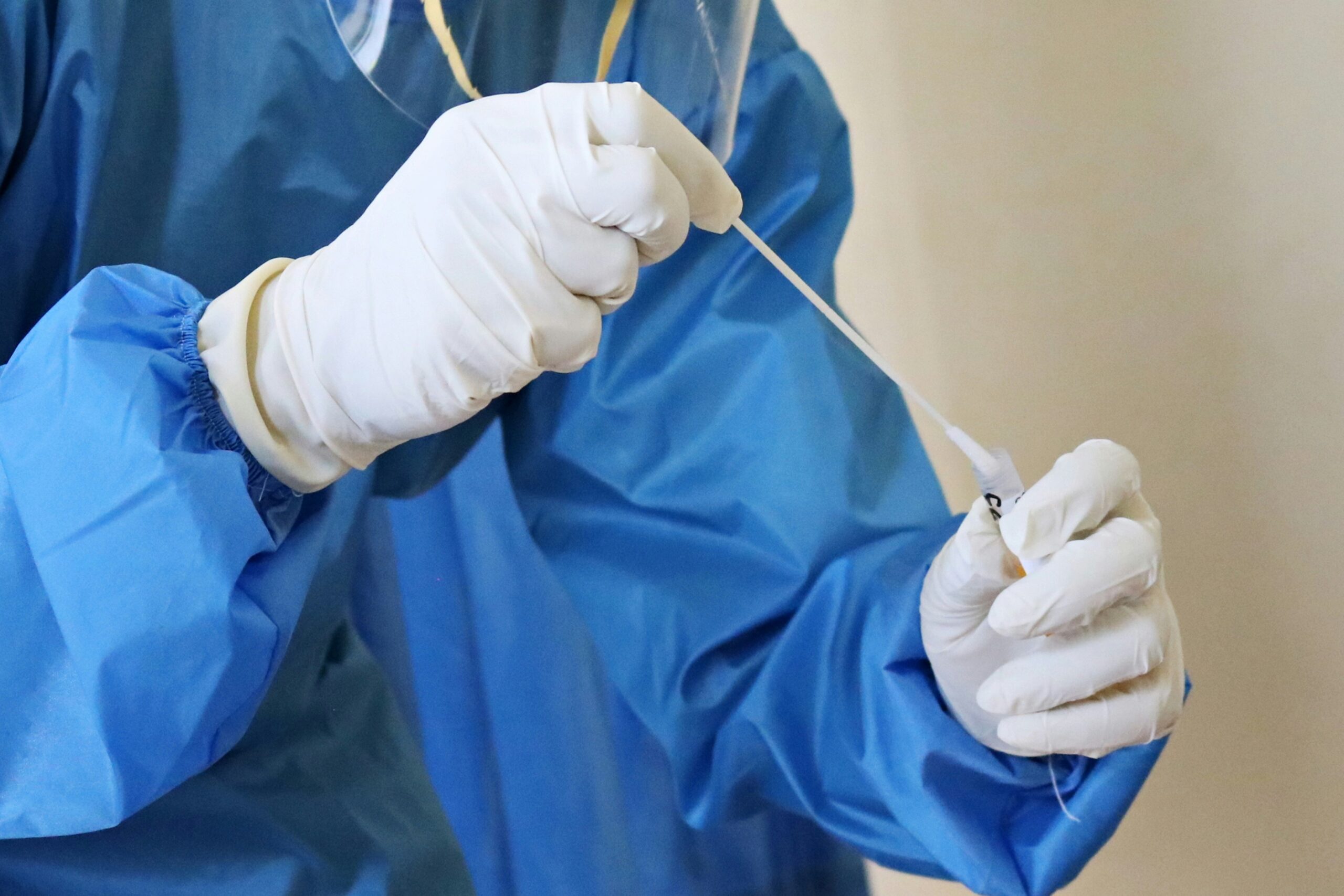What Are STDs?

In the year 2020, there were 374 million new STD infections. The top 4 most encountered was Chlamydia (129 million), Gonorrhea (82 million), Syphilis (7.1 million) and Trichomoniasis (156 million). Presently, more than 1 million STIs are acquired every day1.
Sexually Transmitted Diseases, also known as STDs, are contracted during sexual encounters in both men and women. They encompass a variety of unpleasant symptoms and can even be life threatening. Testing for STDs are often done after symptoms have begun, but should be done periodically for sexually active individuals, regardless if symptoms exist or not.
Let us discuss some of these STDs, in addition to transmission, prevention, testing and treatment fundamentals.
Transmission of STDs

STDs are caused by the transfer of bacteria, viruses and parasites from one sexual partner to another. This can occur via contact with bodily fluids or skin to skin contact during vaginal, oral and/or anal intercourse.
Certain populations are more vulnerable to STDs than others. Sex workers, homosexuals (particularly men having sex with men), IV drug users and prison inmates have much higher rates due to their lifestyle and habits.
Third party contact can also occur in situations where there is exposure unrelated to sex and drug use. Healthcare workers are frequently at risk due to their repeated close proximity to infected people.
Prevention of STDs
The most effective way to reduce the chance of exposure to an STD is sexual abstinence.
The alternative is protection with a condom to prevent exposure to contaminated tissue and fluids, although not 100% effective.

Another factor that increases exposure risk exponentially is having multiple sexual partners. Limited intimacy to just one person can drastically reduce this risk.
Healthcare workers can prevent exposure by observing Universal Precautions and treating every patient as if they are infectious. Wearing personal protective equipment (PPE) like gown, gloves and mask helps maintain a physical barrier between the worker and patient, preventing transfer of any infectious biological material.
Treatment

Bacterial/parasitic infections like Gonorrhea, Chlamydia, Syphilis and Trichomonas are curable. A regimen of antibiotics can help clear up an infection within just a few days.
However, viral infections like HIV, HPV, HSV and Hepatitis B cannot be cured, they are lifelong diseases. Antivirals can be prescribed, but they will not cure the disease, only lessen the symptoms.
Chlamydia & Gonorrhea

Chlamydia is caused by Chlamydia trachomatis and is a leading cause of STDs. Gonorrhea is cause by Neisseria gonorrhea and has many similarities with Chlamydia, in fact, they are often found together during lab testing
Urethritis is the primary symptom, accompanied by a swollen urethra, painful urination and discharge. It can also be found in other areas like the mouth, rectum and eyes.
Despite this, many infected people will not notice any symptoms. Being asymptomatic is a main cause of spreading the disease, since people will continue to have unprotected sex due to thinking they are not infected.
If Chlamydia or Gonorrhea are left untreated, it has the potential to cause infertility.
Chlamydia and Gonorrhea are commonly tested in tandem using Nucleic Acid Amplification Testing (NAAT). This detects genetic material and is extremely sensitive. They are tested together because of their many symptom similarities and due to the fact that they are often found together as a co-infection.
Syphilis
Syphilis is a commonly found STD caused by the corkscrew-shaped spirochete Treponema pallidum. Once infected, a person will go through a series of phases.
The Primary & Secondary Phase is characterized by sores on the body.
The Latent Phase is a period where no symptoms are present. Infected people may get a false sense that the disease has gone away. However, they are still infected and carry the disease for years until symptoms begin showing up again.
The Tertiary Phase occurs if a person never received treatment in the prior phases. It can begin causing major organ damage as well as damage to the brain. Infamous gangster Al Capone experienced the wrath of this later stage of syphilis, as it went to his brain and caused a drastically altered mental status.
A common test for diagnosing Syphilis is the Rapid Plasma Reagin (RPR) test. It consists of mixing patient serum with a charcoal-based reagent that will cause flocculation if treponemal antibodies are present.
Trichomonas Vaginalis
Trichomonas or “Trich” is a tiny parasite that can cause painful urination, penile and vaginal itching, as well as discharge.
Testing for Trichomonas can be done with biochemical testing methods where the antigen is detected by a positive reaction to the antigen. But a more common method is done during with a wet prep test or urine microscopy. While looking through the microscope, the highly motile parasites can be seen “swimming” around by movement of a hair-like projection known as “flagella”.
HIV
According to the CDC, an estimated 1.2 million people in the United States had HIV at the end of 2021. The transmission category with the highest rate (67%) was Male-to-Male Sexual Contact and the highest rate for Race/Ethnicity is Black/African American (40%)2.
Human Immunodeficiency Virus or “HIV” is a disease which weakens a person’s immune system by wiping out certain white blood cells. If left untreated, it can progress to full blown Acquired Immune Deficiency Syndrome (AIDS).
HIV has killed many people over the years, but with proper treatment, it can be controlled in order to extend life expectancy.
Flu-like symptoms are common, along with rashes, ulcers and swollen lymph nodes. If the disease progresses to AIDS, other infections can be contracted more easily due to the weakened immune state.
In recent years, new treatments like PrEP & PEP have hit the market and show strong potential in reducing new HIV infections. PrEP or Pre-Exposure Prophylaxis is a preventive medicine which reduces the chances of getting HIV from sex or drug use. Whereas, PEP or Post-Exposure Prophylaxis is taken after a possible exposure, in order to prevent HIV transmission. Both medications are highly effective, but they must be taken within the prescribed time limits.
HSV (Genital Herpes)
Genital herpes is caused by both Herpes Simplex 1 (HSV-1) and Herpes Simplex 2 viruses. More than 490 million people were estimated to be living with genital herpes in 20163.
The cardinal symptom of genital herpes is the presence of open sores during outbreaks. These outbreaks are often transient, as they can appear and reappear throughout a person’s lifetime.
Doctors can diagnose herpes using a number of methods, including direct observation of any sores or blisters which may be present as well as swabbing the sores and sending off for testing. Blood samples can be taken through venipuncture as well and tested for the presence of HSV 1 and HSV 2 antibodies.
Hepatitis B
Hepatitis B is an infection of the liver which is caused by the Hepatitis B virus. An estimated 296 million people are living with chronic hepatitis B world-wide4.
Hepatitis B is caused by the spread of infected blood or bodily fluids during sexual contact or non-sexual contact. It is very easy to catch and is in fact 50-100 times more infective than HIV5. This means that when someone is infected, the ER levels of virus in the blood are much higher in Hepatitis B than it is with HIV.
Symptoms can include fever, nausea, vomiting, grey-colored stools, dark urine and abdominal pain. Hepatitis B can also cause jaundice which will show yellowing of the skin and sclera due to a buildup of bilirubin in the blood. Severe cases can eventually cause liver failure or liver cancer.
Testing for Hepatitis B is done with a Hepatitis B Panel. This consists of the 3 tests:
Hepatitis B Surface Antigen (HBsAg): a positive result means there is a current infection and it can still be passed on to others.
Hepatitis B Surface Antibody (HBsAb or anti-HBs): a positive result means you are medically immune and cannot be infected or spread the virus to others. This immunity can be due to vaccination or recovery from a past infection.
Hepatitis B Core Antibody (HBcAb or anti-HBc): positive results indicate a previous or current infection. Unlike HBsAb, HBcAb does not provide immunity to the virus.
Vaccinations are available to prevent Hepatitis B infections.
HPV (Genital Warts)
Human Papilloma Virus (HPV) is one of the most commonly encountered STDs. An estimated 300 million women have an HPV infection6.
A common symptom of HPV is the presence of genital warts of various sizes, some resembling a “cauliflower” like appearance.

HPV can also cause cancer. In fact, HPV is the primary cause of cervical cancer as well as anal cancer among men who have sex with men (WHO)7. The “Pap Smear” test can help screen for cases of cervix cancer.
There is a vaccination available which can prevent HPV infection. It is primarily geared toward teenagers, in the effort to immunize prior to beginning sexual activity. Adults can get the vaccination as well in some cases.

Conclusion
STDs can be transmitted through sex, pregnancy, or exposure to contaminated bodily fluids and tissue. Prevention is the key, and certain measures like using protection during sex and limiting sexual encounters to a monogamous relationship can protect you from contracting one of these pathogens. Avoiding these prevention tactics could result in painful symptoms and possibly death.
References
1,3,4,6,7 Sexually transmitted infections (STIs). (2023, July 10). Retrieved from World Health Organization: https://www.who.int/news-room/fact-sheets/detail/sexually-transmitted-infections-(stis)
2. HIV Basic Statistics. (2023, May 22). Retrieved from CDC: https://www.cdc.gov/hiv/basics/statistics.html
5. Hepatitis B & Sexual Health. (2013, October). Retrieved from CDC: https://www.cdc.gov/hepatitis/hbv/pdfs/hepbsexualhealth.pdf











